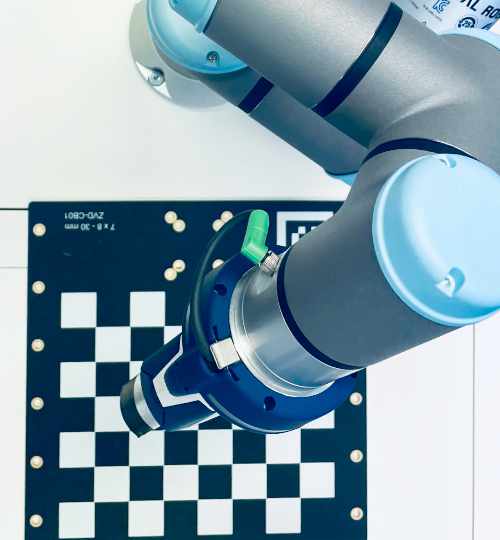





















Recalibration and maintenance of the machine vision system
In practical operation the recognition rate can possibly decrease after a longer period. There may be a large number of reasons, apart from changing inspection parts (!), however, these are often quite simple things that can be eliminated easily.
The prerequisite for a re-calibration is to know the former ideal state which is supposed to be restored. Yet this requires some documentation in advance or some additional inspection tools in your image processing application.
Tools for camera setup and calibration

Documentation of
The calibration test chart
A test chart adapted to the application will help the operator to set up the system correctly. It should be able to calibrate all the measured variables of the system to be determined.
Calibration using the software
In order to reproduce the same state, some test tools can be integrated in the software project which make it easier for the user to reach the same state as at the beginning.
But which physical parameters can be detected by a camera system? These must be brought back to its initial state by means of calibration:
Using a simple additional measuring application and a brightness measuring tool, the user will be able to adjust the system within seconds in such a way that the intensity, translation, rotation and scaling can be corrected to the initial values.
Image processing applications often do not only have features to convert pixels to millimetres, etc., but calibration routines using complex coordinate systems. Multi-point coordinate systems automatically determine the origin, the location of the X-axis and Y-axis and scaling. Complex multi-point or chessboard pattern systems are even capable to compensate nonlinear distortion such as lens or trapezoidal projection errors etc. A perspective distortion can be removed.
This also facilitates the automatic re-calibration significantly. Please note that absolute precision is required for this, too. In case of robot applications please calibrate ideally in the plane of the gripper system and not in the conveyor belt plane. A proper calibration target must be very accurate and precisely positionable by means of pins.
Recalibration and maintenance of the system - a case study
Actual situation: The image looks too dark, the software application is not working properly any more. According to the reference image, however, the current image detail of the camera image is not shifted. What may have happened?
Most likely, the illumination has aged and your light source is no longer as intense as before. How to correct the actual lack of light.
Vision-Doctor.com is a private, independent, non-commercial website project without customer support.
For the best advice, training and sales of imaging and machine vision equipment please click here.
(external link partner website in Europe)
